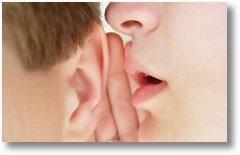
Word of Mouth campaigns are becoming increasingly common for many reasons. Consumers are becoming more distrustful of advertisers, marketing budgets are tightening, and the internet (and hence the capacity to run more structured word of mouth campaigns) continues to spread.
At the same time, advertisers are increasingly requiring their campaigns to deliver measurable ROIs – something which has been notoriously difficult with WOM campaigns.
So how do you measure a WOM campaign?
With true WOM its virtually impossible except through research and then its notoriously unreliable. But for internet based WOM campaigns it is not only possible but relatively easy providing you keep your expectations realistic.
1) Sites like Technorati & BlogPulse enable you to not only quantitatively measure how often your brand is mentioned but also check out what is being said. The numbers aren’t accurate in any absolute sense but they can be valuable as a trend line to see if your campaign is increasing mentions on blogs.
2) Don’t limit yourself to blogs. Choose a subset of forums where your audience congregate and measure these too
3) A measurement of discussion share can be found by using tags on sites like Delicious. Whilst tagging is still relatively new, tagged sites are ones which people have marked as being ones they want to return to and are suggesting to others. So checking this can give you an indication of how others are responding to your site – is it worth returning to, is it worth telling others about.
4)If the WOM campaign involves the creation of video content, incorporate hooks in the code to see who is playing it, and from where.
5) If your campaign is significant enough and/or prolonged, it might be worthwhile considering an automated analytic service like Nielsen to index content on the web. Natural Language Processing parses text and pulls out correlations between your brand and other words. Machine Language Process searches through thousands of sites to refine its search criteria and return better results. Its not perfect by any means but it can yield some interesting information.
Most of all, remember that WOM is qualitative and it really is the quality of the communication not the quantity that matters. But at least by using some of these more quantitative measures you might get an idea as to whether the message is getting out there and creating a buzz.



